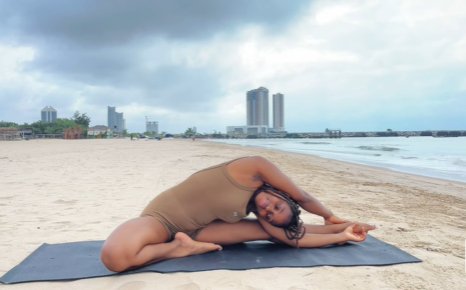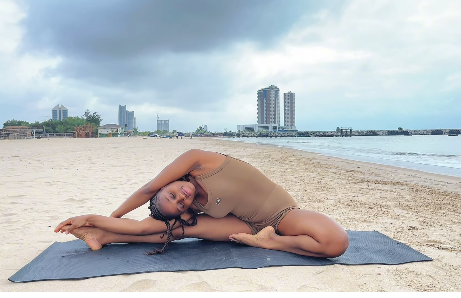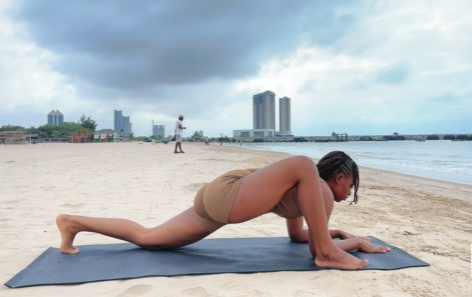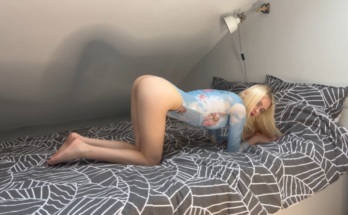
In a world that moves at an ever-increasing pace, our minds and bodies often carry emotional tension alongside physical stress. Lingering feelings of anxiety, sadness, or overwhelm can manifest as tight shoulders, a clenched jaw, or restless thoughts that seem impossible to quiet. Yin Yoga provides a gentle, restorative approach designed to release both physical and emotional tension, creating a safe space to explore, process, and let go. This slow, mindful practice allows the body to open, the nervous system to calm, and the emotions to gently unwind.
This guide will take you through a full Yin Yoga session aimed at emotional release and deep relaxation. Designed for practitioners of all levels, it emphasizes stillness, mindfulness, and connection to the breath, fostering profound healing and self-awareness.
🌿 What Makes Yin Yoga Unique?
Unlike dynamic or “yang” styles of yoga, Yin Yoga emphasizes long-held passive stretches, typically held anywhere from 2 to 5 minutes. It targets the connective tissues, including fascia, ligaments, and joints, rather than the muscles alone.
Key principles of Yin Yoga for emotional unwinding:
- Stillness and Mindfulness – Holding poses for extended periods encourages observation of physical sensations and emotional patterns.
- Nervous System Regulation – Gentle, supported stretches stimulate the parasympathetic nervous system, promoting relaxation.
- Emotional Release – By calming the mind and opening the body, Yin Yoga can uncover and release suppressed emotions stored in the body.
- Deep Breath Awareness – Breath becomes a tool to soften tension, anchor awareness, and facilitate emotional processing.
- Restorative Props – Bolsters, blankets, and cushions support the body, allowing complete surrender and deeper release.
Yin Yoga is not about achieving extreme flexibility—it is about accepting what is present, exploring sensations without judgment, and creating space for internal release.
🧘♀️ Setting the Space

Before beginning, create a sanctuary for your practice:
- Quiet Environment – Dim lighting or candles can create a calming atmosphere.
- Comfortable Clothing – Loose, soft garments allow for passive stretching without restriction.
- Props – Bolsters, folded blankets, or cushions support the body in long-held poses, preventing strain.
- Optional Music – Soft, slow music or nature sounds can enhance the relaxing effect.
Settle onto your mat with a sense of intention, acknowledging that this session is a time for emotional self-care.
🌿 Breath Awareness and Grounding (2–3 Minutes)
Begin in a seated or reclined position, closing your eyes and bringing attention to the breath.
1. Observing the Breath
- Inhale deeply through the nose, noticing the belly expand.
- Exhale slowly, feeling the body soften.
- Continue for 1–2 minutes, simply observing without trying to change the breath.
2. Body Scan
- Mentally scan from the crown of your head to your toes.
- Notice areas of tension, tightness, or discomfort without judgment.
- With each exhale, allow those areas to soften slightly.
This grounding phase helps settle the nervous system and brings awareness inward, preparing both body and mind for emotional release.
🧘♀️ Yin Poses for Emotional Release

1. Butterfly Pose (Baddha Konasana) – 3–4 Minutes
- Sit with soles of the feet together and knees falling outward.
- Place a bolster or folded blanket under your knees for support if needed.
- Fold gently forward, resting hands on the floor, feet, or a block.
Focus: The hips are a common storage area for unresolved emotions, especially sadness or grief. Holding this pose allows tension to slowly release. Breathe into tightness and notice sensations without trying to change them.
2. Supported Child’s Pose (Balasana) – 3–4 Minutes
- Kneel with knees wide apart, sit the hips back on your heels.
- Place a bolster or cushion under the torso and forehead for support.
- Allow the arms to rest forward or alongside the body.
Focus: This forward-folding pose compresses and softens the lower back and abdomen, promoting a sense of safety and surrender. It is particularly effective for relieving anxiety or emotional overwhelm.
3. Reclining Twist (Supta Matsyendrasana) – 2–3 Minutes per Side
- Lie on your back, draw knees into your chest, and gently drop them to one side.
- Extend arms out in a T-shape, gaze toward the opposite hand.
- Use a cushion or bolster between knees for support.
Focus: Twists massage internal organs and facilitate the release of stored tension and emotions. This pose encourages gentle detoxification both physically and emotionally.
4. Supported Heart Opener (Supta Virasana or Supported Bridge) – 3–5 Minutes

- Lie on your back with knees bent and feet hip-width apart.
- Place a bolster or folded blanket under the upper back and head, allowing the chest to open naturally.
- Arms can rest comfortably by the sides or overhead.
Focus: Opening the chest allows the heart space to expand, which can release grief, sadness, and emotional tightness. Breathe deeply into the chest and notice how the body responds.
5. Legs Up the Wall (Viparita Karani) – 5 Minutes
- Lie on your back with legs extended vertically against a wall.
- Place a cushion under the hips if desired for extra support.
- Close your eyes and focus on soft, natural breathing.
Focus: This restorative inversion calms the nervous system, reduces stress, and encourages mental and emotional release. It’s a gentle way to end the session with a sense of lightness and relaxation.
🌿 Breathwork Integration
Throughout the practice, incorporate deep, slow breathing:
- Inhale for a count of four, filling the lower belly, ribcage, and chest.
- Pause for a count of two.
- Exhale for a count of six, allowing the body to soften.
Optional: Ujjayi Breath (Ocean Breath) – Slightly constrict the back of the throat, creating a soft ocean-like sound with each breath. This can further anchor attention, calm the mind, and enhance the release of tension.
🌿 Mindful Awareness During Yin Yoga
While holding poses:
- Notice Sensations – Tingling, tightness, or warmth are all normal signals of the body releasing tension.
- Observe Emotions – Memories, feelings, or subtle emotions may surface. Allow them without judgment.
- Stay Present – If the mind wanders, gently bring attention back to the breath and body.
- Honor Your Limits – Yin Yoga is about surrender, not forcing the body. Adjust props and posture for comfort.
By practicing mindfulness and non-judgmental awareness, Yin Yoga supports both physical flexibility and emotional flexibility, helping practitioners navigate stress and emotional blocks with grace.
🌿 Closing Relaxation (5 Minutes)

End your session in Savasana (Corpse Pose) or on your back supported by cushions:
- Close the eyes, soften the jaw, and let the arms rest comfortably.
- Allow the body to completely surrender.
- Observe how your body feels after the poses: lighter, calmer, and more spacious.
- Visualize emotions flowing out with the breath, leaving clarity and calmness in their place.
This final rest is critical for integrating the emotional and physical benefits of the practice, allowing the nervous system to recalibrate.
🌿 Benefits of This Yin Yoga Flow
- Emotional Release – Gentle, prolonged holds create space for processing and letting go of stored emotions.
- Nervous System Regulation – Parasympathetic activation reduces anxiety, stress, and restlessness.
- Improved Flexibility and Mobility – Connective tissues lengthen slowly without strain.
- Enhanced Mindfulness – Focus on breath and sensation cultivates presence and self-awareness.
- Restorative Calmness – Leaves body and mind deeply relaxed, rejuvenated, and balanced.
Regular practice of Yin Yoga, even just 15–20 minutes daily, can provide emotional clarity, resilience, and a sense of inner peace. It offers a safe, gentle way to explore and release the tension we carry in both body and mind.
🌙 Tips for Emotional Yin Yoga
- Use blankets, bolsters, or cushions to support the body and allow full relaxation.
- Focus on slow, deep breathing; the breath is the bridge between body and mind.
- Practice in a quiet, comfortable space with minimal distractions.
- Allow emotions to surface naturally; acknowledge them without judgment.
- End the session with grateful reflection or journaling to integrate emotional insights.
Yin Yoga is not just a physical practice; it is a gentle emotional journey that reconnects body, mind, and heart. With patience, mindfulness, and consistent practice, it becomes a sanctuary—a restorative pause in the chaos of everyday life.
By dedicating even 15 minutes to slow, restorative Yin Yoga, you create a safe space for emotional unwinding, deep release, and inner calm. It is a gentle, compassionate way to care for yourself, honoring the body’s wisdom and the mind’s need for stillness.
Embrace the practice, breathe deeply, and allow yourself to let go, unwind, and heal. 🧘♀️💫


